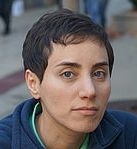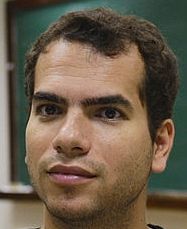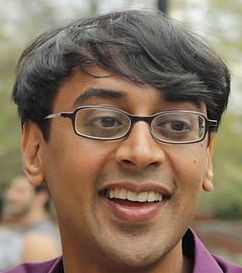The author of this article has a daughter, who at sixteen years of age, declared that her life would be over when she was thirty. This is as painful to write now, as a it was to listen to all those years ago. She feels differently now.
John Charles Fields FRS, FRSC was born in Canada in 1863 and created the Fields Medal to honour contributions to mathematics, achieved by those in the field who are under forty years of age. ( Explore Fields life on Wikipedia here…)
Awarded every four years at the International Congress of Mathematicians, this age restriction has meant that some very prestigious mathematicians have missed being recipients of the medal because their greatest achievements came later in life.
Fields intended the medal to be a spur to young minds, to create a potentiality in mathematics that would drive the young mathematician to pursue even more stratospheric and interesting goals in their discipline in later life.
2014 has been a red letter year for the Fields Medal. Awarded for the first time to a woman and to a mathematician from South America.
Now that emerging economies and a crack in the gender imbalance of the awards has been achieved, lets hope that this fracture continues to widen and that female mathematicians and great analytical thinkers from other previously unrepresented countries, of both genders, continue to honour their academies and pursue the medal.
Winners this year…
an Iranian mathematician and the first female recipient, was awarded the Fields Medal for her outstanding contributions to the dynamics and geometry of Riemann surfaces and their moduli spaces.
“Maryam Mirzakhani has made stunning advances in the theory of Riemann surfaces and their moduli spaces, and led the way to new frontiers in this area. Her insights have integrated methods from diverse fields, such as algebraic geometry, topology and probability theory.
In hyperbolic geometry, Mirzakhani established asymptotic formulas and statistics for the number of simple closed geodesics on a Riemann surface of genus g. She next used these results to give a new and completely unexpected proof of Witten’s conjecture, a formula for characteristic classes for the moduli spaces of Riemann surfaces with marked points”.
from Brazil, was awarded a Fields Medal for his profound contributions to dynamical systems theory, which have changed the face of the field, using the powerful idea of renormalization as a unifying principle.
“Avila leads and shapes the field of dynamical systems. With his collaborators, he has made essential progress in many areas, including real and complex one-dimensional dynamics, spectral theory of the one-frequency Schrodinger operator, flat billiards and partially hyperbolic dynamics.
Avila’s work on real one-dimensional dynamics brought completion to the subject, with full understanding of the probabilistic point of view, accompanied by a complete renormalization theory. His work in complex dynamics led to a thorough understanding of the fractal geometry of Feigenbaum Julia sets“.
was awarded a Fields Medal for developing powerful new methods in the geometry of numbers, which he applied to count rings of small rank and to bound the average rank of elliptic curves.
“Bhargava’s thesis provided a reformulation of Gauss’s law for the composition of two binary quadratic forms. He showed that the orbits of the group SL(2, Z)3 on the tensor product of three copies of the standard integral representation correspond to quadratic rings (rings of rank 2 over Z) together with three ideal classes whose product is trivial.
This recovers Gauss’s composition law in an original and computationally effective manner. He then studied orbits in more complicated integral representations, which correspond to cubic, quartic, and quintic rings, and counted the number of such rings with bounded discriminant”.
was awarded a Fields Medal for his outstanding contributions to the theory of stochastic partial differential equations, and in particular for the creation of a theory of regularity structures for such equations.
“A mathematical problem that is important throughout science is to understand the influence of noise on differential equations, and on the long time behavior of the solutions. This problem was solved for ordinary differential equations by Ito in the 1940s. For partial differential equations, a comprehensive theory has proved to be more elusive, and only particular cases (linear equations, tame nonlinearities, etc.) had been treated satisfactorily.
Hairer’s work addresses two central aspects of the theory. Together with Mattingly he employed the Malliavin calculus along with new methods to establish the ergodicity of the two-dimensional stochastic Navier-Stokes equation”.
If you are reading this on the top of a Clapham omnibus on your mobile phone, then some of the content may seem a bit esoteric, if you are disengaged from maths as a subject. If you are a young woman with an interest in number, don’t you dare give up by the age of thirty…Go get that medal, girrrl.




